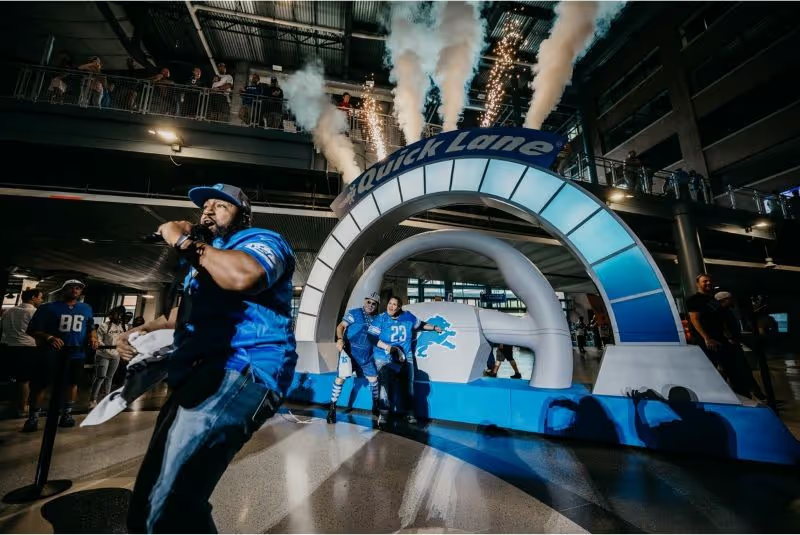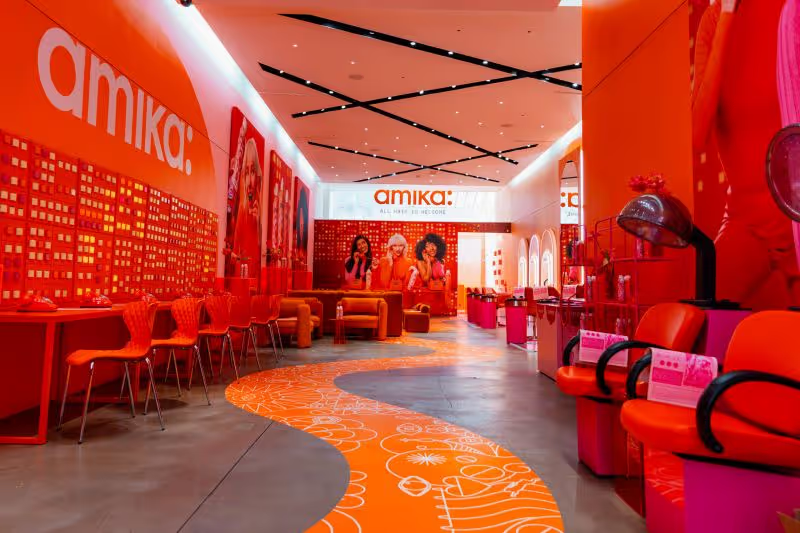Activation vs Traditional Advertising: Explaining Engagement Gaps
Television commercials cost hundreds of thousands of dollars, and most people skip them. Print ads get glanced at for seconds before readers flip the page. Meanwhile, brands investing in pop-up experiences are generating lines around the block. Pop-ups create organic social media content, engaging experiences, and sales conversations with customers who specifically seek out the brand.
Brand activations create direct consumer engagement through designed experiences, while traditional methods broadcast messages through media channels, hoping audiences pay attention. The engagement gap between activation vs traditional advertising determines budget allocation, measurement methods, and whether marketing campaigns drive actual business results or create fleeting brand awareness.
How Interactive Brand Activations Work
Interactive activations turn brand messages into experiences people can touch, see, and participate in directly. Instead of just telling people about products through ads, activations let consumers interact with brands through pop-ups, mobile tours, and custom experience kits. The interaction between live events and audience engagement creates immediate feedback that builds authentic relationships and drives purchase decisions.
Successful brand activations require detailed planning and precise execution to meet business goals. Experiences include pop-up installations, mobile tours, and custom PR boxes that tell brand stories beyond single events:
What Makes Brand Experiences Memorable
Live experiences succeed when teams plan around how people move through and interact with spaces. Planning begins with setting clear goals, understanding who will attend, and figuring out how each moment supports what the brand wants to communicate. Location, timing, and space design must work together to create experiences that feel valuable rather than like obvious marketing.
The best interactive brand activations engage multiple senses to create memories that stick. Colors, sounds, textures, and even smells contribute to moments people remember weeks later. This sensory engagement separates activations from billboards or commercials that people can easily ignore or forget.
Building Emotional Connections Through Experience
Experiential campaigns create emotional connections because consumers interact directly with products and services instead of only hearing about them. Pop-up experiences turn blank spaces into branded destinations where people discover products through hands-on engagement:
- Product Demonstration Stations: Hands-on interaction with products shows benefits immediately rather than describing them
- Interactive Brand Elements: Custom installations get people participating while they learn about the brand
- Personalization Opportunities: On-site services like live engraving or product customization create unique takeaways
- Storytelling Environments: Physical spaces tell brand stories through design and interactive elements
Traditional advertising broadcasts messages to audiences, while the experiential touchpoints of activations invite consumers to participate directly in brand stories that create lasting memories and purchase intent.
Measuring Brand Activation Success
Brand activation measurement tracks attendance, engagement time, social shares, and lead quality to determine actual business impact. Post-event surveys and brand perception studies show whether participants actually plan to purchase after experiencing the brand firsthand. Sales data reveals conversion rates weeks and months after activations conclude.
Teams monitor performance during live events and make immediate adjustments when needed. Staffing gets increased at popular stations, programming changes are based on crowd response, and environmental elements are modified for better flow. These real-time changes maximize event impact and create learnings for future activations.
Why Major Brands Execute Experiential Campaigns
Television commercials and print ads cannot guarantee that target audiences will pay attention or take action after exposure. Major brands now invest in pop-ups, mobile tours, and custom campaigns like these that create direct consumer interactions and measurable business outcomes:
- NFL Draft Fan Experience: Detroit Lions created entrance tunnels with fog effects, interactive games like reaction walls and skeeball, and photo stations with branded props that generated media attention and social sharing
- Beauty Salon Pop-Ups: Amika's SoHo salon featured personalized hair consultations, styling stations, and a "hair-apist" call center where consumers received product education and styling services
- Fashion Mobile Tours: Coach's college campus tours brought branded experiences directly to students through custom vehicles and campus activations at multiple university locations


Traditional Advertising Methods and Their Impact
Traditional advertising methods include television, radio, print media, and outdoor advertising that broadcast brand messages to audiences who may or may not be paying attention. These methods build brand awareness by reaching large numbers of people with the same message repeatedly over time. Television commercials, print ads, and billboards hope to capture attention during brief moments when consumers might be receptive.
Standard media placement strategies achieve broad reach but cannot guarantee engagement or interaction. Television advertising exposes brands to millions of viewers, though many skip commercials or multitask during breaks. Print media delivers detailed information to readers who choose to engage, while outdoor advertising competes for attention among countless other visual distractions in busy environments.
Engagement and Results: How Activation Differs from Traditional Approaches
Classic marketing methods push messages to audiences who watch, read, or ignore them, while activations invite consumers to participate directly in brand experiences. Print ads and commercials hope for attention, but pop-ups and mobile tours create environments where engagement becomes unavoidable. This difference impacts everything from how well people remember brands to whether they purchase.
Brand activations generate immediate feedback and build relationships in real time between brands and their audiences. Consumers become part of the experience rather than receiving information alone, which creates stronger connections and more memorable interactions:
Consumer Interaction Levels Drive Different Outcomes
Billboards and TV ads depend on repeated exposure to build recognition, while brand activations create memorable moments through direct participation. Mobile tours deliver branded experiences to consumers where they live and work, building personal connections that media buys cannot match:
- Face-to-Face Engagement: Brand ambassadors build relationships through conversation and hands-on product education
- Product Sampling Programs: Consumers try products immediately rather than only reading about benefits
- Interactive Technology Integration: Touch screens and digital displays let participants explore at their own pace
- Social Media Amplification: Participants document and share experiences naturally without prompting
Long-Term Brand Loyalty Effects
Brand building through activation creates deeper emotional connections because consumers form personal memories associated with positive brand experiences. These experiential memories prove more resistant to competitive messaging and create stronger purchase intent than exposure to traditional advertising messages alone. Participants often become brand advocates who share their experiences with their networks, creating authentic word-of-mouth marketing.
Fan engagement reaches new levels when brands create experiences that celebrate shared interests and values. Interactive brand activations tap into existing passions and community connections, allowing brands to become part of meaningful moments rather than interrupting them. This method builds authentic relationships that extend beyond single transactions to create lasting brand advocates.
ROI Comparison Between Activation and Traditional Ads
Traditional advertising requires substantial media buying budgets plus creative development costs, while interactive brand activations invest directly in experience creation, staffing, and logistics management. PR boxes and experience kits create unboxing moments that recipients remember and share:
- Direct Sales Opportunities: Mobile retail and on-site purchasing generate revenue during the experience itself
- Lead Generation Quality: Face-to-face conversations produce leads that convert better than online forms
- Social Media ROI: Participants create content naturally, reducing paid social media spend
- Long-Term Value Creation: One activation influences buying decisions for months rather than single purchases
Ready to Move Beyond Traditional Advertising with Activate?
Activate designs and executes interactive brand activations and experiences that generate measurable results for global brands with live events, mobile tours, and premium PR boxes. We execute the vision with brainstorming sessions, strategic concepts, and production teams that will make it happen. Our in-house warehouse, fulfillment services, and fabrication capabilities handle setup, brand ambassadors, and on-site operations from concept to completion. We've worked with brands like Coach, Disney, and Kendra Scott to create experiences that drive real business impact. Schedule your initial consultation at NewBusiness@Activatexp.com to determine your goals, vision, and project timeline.
Frequently Asked Questions
What does activation mean in advertising?
Activation in advertising refers to the process of transforming brand messaging into immersive, interactive experiences that engage consumers through direct participation rather than passive message consumption. Interactive activations create tangible touchpoints where audiences can physically interact with brands through pop-up experiences, mobile tours, product demonstrations, and custom experience kits that extend beyond traditional media channels.
Does traditional advertising still work?
Traditional advertising methods continue to generate results for building brand awareness and reaching large audiences through established media channels like television, radio, print media, and outdoor advertising. However, when comparing interactive brand activation vs traditional advertising, these approaches face increasing challenges in capturing consumer attention and creating the emotional connections that drive long-term brand loyalty compared to experiential marketing approaches that invite active participation.
Why are activations important?
Activations hold significant importance because they create memorable experiences that forge emotional connections between brands and consumers through direct interaction and participation. Interactive activations generate stronger brand recall, organic social media amplification, and authentic word-of-mouth marketing while providing immediate feedback and relationship-building opportunities that traditional advertising methods cannot replicate.
